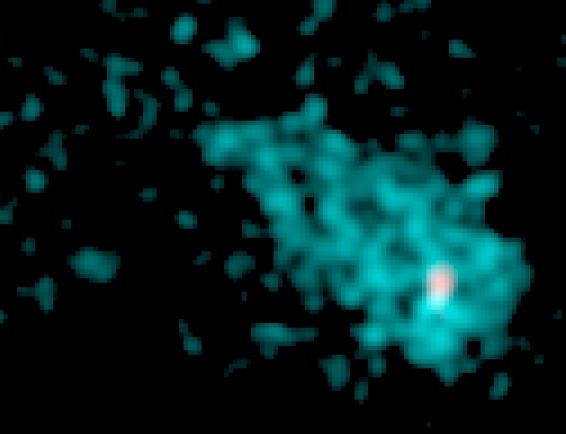
|
Explanation: Using x-ray data from the orbiting Chandra Observatory along with radio data from the Very Large Array, a team of researchers has discovered evidence for a new example of one of the most bizarre objects known to modern astrophysics -- a neutron star. Embedded within supernova remnant IC443, the suspected neutron star appears as the reddish source at the lower right in this false-color x-ray image. Perhaps 20 kilometers across but with more mass than the Sun, this ultracompact object is the collapsed core of a massive star. The core collapsed when the star, located a reassuring 5,000 light-years away in the constellation Gemini, exploded long ago. How long ago? Judging from the characteristic bow wave shape of the x-ray nebula the researchers have estimated the speed of the neutron star as it plows away from the explosion site. Comparing the speed to the measured distance traveled from the center of IC443, the team, three high school students and a teacher from the North Carolina School for Science and Mathematics, calculated that the light from the supernova explosion arrived at Earth about 30,000 years ago.
|
January February March April May June July August September October November December |
| ||||||||||||||||||||||||||||||||||||||||||||||||
NASA Web Site Statements, Warnings, and Disclaimers
NASA Official: Jay Norris. Specific rights apply.
A service of: LHEA at NASA / GSFC
& Michigan Tech. U.
Based on Astronomy Picture
Of the Day
Publications with keywords: supernova remnant - neutron star
Publications with words: supernova remnant - neutron star
See also:
- APOD: 2025 October 1 Á NGC 6960: The Witchs Broom Nebula
- APOD: 2025 September 3 Á Cir X1: Jets in the Africa Nebula
- APOD: 2025 June 9 Á Between Scylla and Charybdis: A Double Cosmic Discovery
- Supernova Remnant Cassiopeia A
- APOD: 2025 January 8 Á Supernova Remnants Big and Small
- APOD: 2024 September 18 Á The Mermaid Nebula Supernova Remnant
- APOD: 2024 April 16 Á Filaments of the Vela Supernova Remnant
